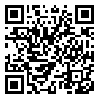Volume 7, Issue 4 (2016)
LRR 2016, 7(4): 103-123 |
Back to browse issues page
1- Associate Professor of Linguistics, University of Al-Zahra, Tehran, Iran
2- M.A. in Linguistics, University of Al-Zahra, Tehran, Iran
2- M.A. in Linguistics, University of Al-Zahra, Tehran, Iran
Abstract: (9550 Views)
The study of the unit of text and textual arrangement, especially from communicative viewpoint, is of high importance, but in comparison to units of sentence and the smaller ones is rarely studied. Thus, this paper explores this subject, studying a linguistic genre. We, therefore, examine notes written by Kermanshahi Azad university students at the end of their exam papers, called “begging note”, to get a better score. The sample included 25 students’ notes written by University students, and 25 students’ notes of sophomore and junior boys’ high-schoolers in their exam papers. Thus, description of patterns of the begging notes according to textual arrangements of gāms (moves) and gāmaks (steps) were analyzed. The aim was to find different patterns of moves and steps arrangement (sub-moves) in the notes, based on Biber, Connor and Upton idea’s (2007) and Sasani and Yazdani (1392); particularly, the notes were divided into different moves to show maximum and minimum moves. Data analysis revealed that the notes had 4 moves: opening, request, reason, and ending. Move arrangements were compared in two groups. In short, it was found that both groups had the maximal 4-move arrangement, and the minimal 2-move arrangement, but the frequency use of moves in each group was different, as in the high-schoolers’ group, and "request"’ move had the most frequency and in university students "ending" move had the least one. The pattern study of moves, 4-move discrete arrangement was the most used pattern, and also 2-move arrangement was the least used in the two groups.
| Rights and permissions | |
 |
This work is licensed under a Creative Commons Attribution-NonCommercial 4.0 International License. |

